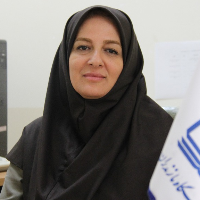Visual solutions in visualizing and legitimizing astrology in illustrated Falnama of the Safavid era
Author(s):
Abstract:
Belief in the effect of the status of celestial bodies on human life events has long been common among different ethnic groups. The Astrological Concepts in Iranian art have been used as decorative engraving in metalworking and other applied arts in different periods but in the illustrated Falnama of the Safavid era, these concepts were not used as decorations, but in their original nature, as a tool for predicting. Forecasting through astrology in the Islamic period has been faced with the prohibition of religious institutions. With regard to the determinant role of religion in the Safavid dynasty, this question is raised that how forecasting through astrological concepts were started in illustrated Falnama of the Safavid era and what steps have been taken to legitimize it against the prohibition of religious institutions? In this paper, to address this issue with a descriptive-analytical-comparative method, four Illustrated Falnama: the Dispersed Falnama, the Topkapi Persian Falnama, the Dresden Falnama and the Falnama of Ahmet I have been studied. In the present study, the presence of the concepts of astrology in the images of these four manuscripts was first examined, then the way of illustrating the concepts of astrology and the legitimization strategies are adapted to this prediction method. The result of this study indicates that the astrological sentences in prediction were not used in the oldest version of the Falnama due to the religious prohibition and were used in the augury text. But in the next manuscripts, these concepts are directly depicted in the drawings, by using some solutions such as the use of Quranic verses in each image, religious icons along with astronomical theme, and also angels to legitimize the use of Astrological sentences in prediction.
Keywords:
Language:
Persian
Published:
Journal of Motaleate-e Tatbighi-e Honar, Volume:8 Issue: 15, 2018
Pages:
39 to 54
https://magiran.com/p1939582
سامانه نویسندگان
مقالات دیگری از این نویسنده (گان)
-
A Comparative Study of Tree Imagery in David Jones’s Paintings and Poems in the Light of Panofsky’s Iconology
Houra Adel, Gholamreza Pirooz *, , Gharibreza Gholamhosseinzade
Interdisciplinary Studies on Literature, Arts and Humanities, -
A comparative study of the representation of the story of Lily and Majnoon in the fabrics of the Safavid period
Fatemeh Nasiri *, Mohammadtaghi Ashuri,
Journal of Visual and Applied Arts, -
Rethinking the relationship between media and the new arts based on the ideas of Gean Baudrillard
*, Ahmad Nadalian
Applied Arts Journal, -
The Impact of the Shiraz Turkmen School Painting on the NimatNameh Paintings in India (With the lutman's semiosphere approach)
Fattaneh Mahmoudi *, Saied Akhavani, Hamoon Mahdavi
Journal of Fine Arts,



